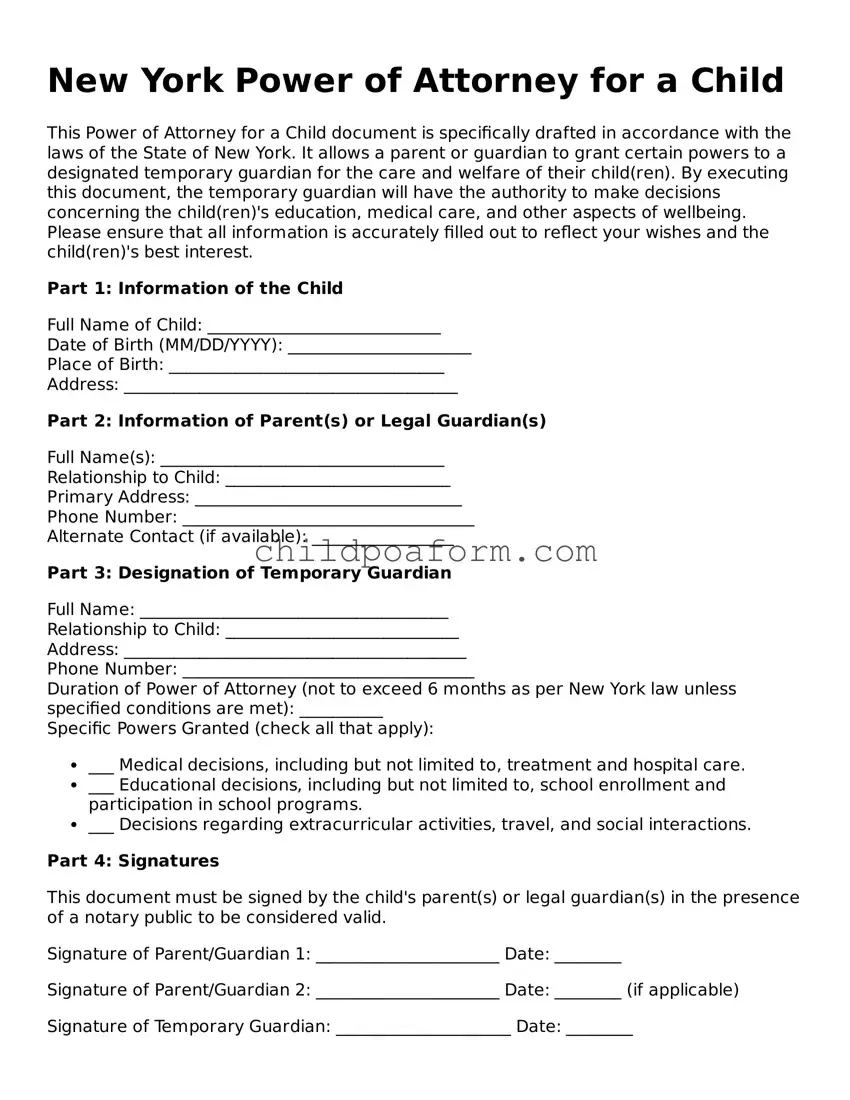Instructions on Utilizing New York Power of Attorney for a Child
Stepping up to provide care for a child is a significant act of love and responsibility. Whether you're stepping in due to a temporary situation or for more long-standing reasons, having the right legal paperwork in place is critical. A New York Power of Attorney (POA) for a Child form empowers you to make decisions and take action regarding a child's welfare in the absence of their parents. It's a vital tool to ensure the well-being of the child under your care. Let's walk through the steps to fill out this form correctly, ensuring it reflects your agreement with the child's parents and adheres to New York State's requirements.
- Start by gathering all required information, including the full legal names and addresses of the child, the parent(s) or current legal guardian(s), and the designated agent (the person receiving the power of attorney).
- Enter the designated agent's information at the beginning of the form, including their full legal name and contact information.
- Fill in the child’s full legal name, date of birth, and primary address.
- Specify the exact powers being granted to the agent. This section must be detailed to avoid any ambiguity regarding the agent’s authority. Include decisions related to the child’s education, health care, and daily activities.
- Clearly delineate the term during which the power of attorney will be effective. This can be a set period (with a specific start and end date) or tied to the occurrence of a specific event.
- Both the parents or current legal guardians and the designated agent must sign the form in the presence of a notary public. Ensure this step is completed to authenticate the document legally.
- Once signed, make copies of the document for all parties involved. Keep the original in a safe but accessible place.
After the form is fully executed, it marks the beginning of your legal authority to make decisions on behalf of the child. Yet, it's crucial to communicate openly with the child’s parents or legal guardians throughout the duration the POA is in effect. This collaboration ensures the child's needs are met comprehensively and lovingly. During your tenure as the child's temporary guardian, remember to maintain records of all significant decisions and actions taken under the authority of the POA. Keeping everyone in the loop not only fosters trust but also ensures the child’s welfare is always the main priority.
